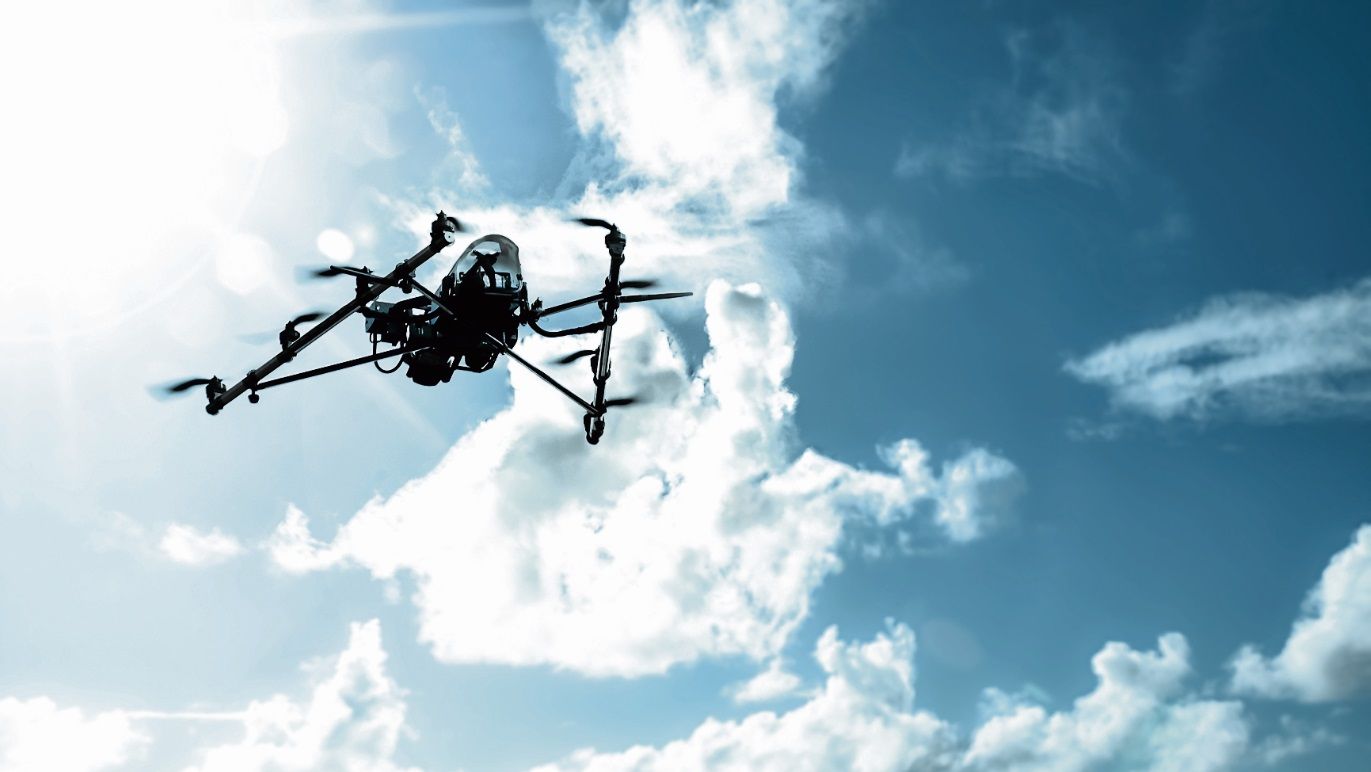They used to be mysterious hints of a distant future, but today everybody can buy a drone for a few thousand bucks.
The military uses them for unmanned battle missions and the fire department uses them to oversee fires. Even pushers are now using drones to monitor the police.
Ideas are abundant and the technology is getting more advanced every day. It seems like only national flying regulations prevent a future scenario in which flying drone traffic will be hovering above our heads.
Flying ambulances
At the national space institute, DTU Space, researchers have used Danish drones from Sky-Watch to help aid organisations in the Philippines and the military in Greenland.
“We proposed defibrillator drones a few years ago, but without success. The technology simply wasn’t there,” said Jakob Jakobsen, a researcher in GPS navigation at DTU Space.
While nothing prevents drones from accomplishing the task today, it’s the law that really gets in the way.
“The law is definitely a showstopper, but there are exceptions in acute emergency situations. The fire department can bypass the rules and use drones if they can justify the decision,” Jakobsen said.
According to the rules laid out by national traffic authority Trafikstyrelsen, drones have to fly within the line of sight and are prohibited in residential areas, near prisons or accident scenes.
Door-to-door drones
If the rules eventually release the drones, a lot of companies will take advantage of the technology, leaving the skies open for commercial exploitation.
Online retailer Amazon released a promotional video last year of a drone delivering packages directly to your doorstep. In Canada, a drone carried a case of beers across the country’s frozen northern lakes.
“The problem with using drones for delivery is that the drones are too fragile. The ones robust enough to carry heavy items are expensive and may cost around 200,000 to 300,000 kroner,” Jakobsen said.
Delivery drones are also easy theft targets, and it’s uncertain how far a drone can travel and still be accurate.
“Another issue is landing. Long-distance drones may not land as accurately as the small quadrocopters. Even if you give the drone the address, it may not be sure to land at the exact co-ordinates. And who will return it?”
Tougher rules
Trafikstyrelsen is following the drone development closely, but is careful not to act prematurely.
“We are trying to make the legislation meet the new demands, but technology is moving so fast that it is hard for the law to keep up,” said Mads Gundelund Gerlach, a spokesperson for Trafikstyrelsen.
“If we are too hasty, we risk that the law will become a nuisance.”
Before we get to see dense drone traffic in the skies, the next revolution will be to let the drones leave the sight of the pilot.
At Trafikstyrelsen, that revolution is still far away.
“Out of sight is still far into the future. The technology just isn’t safe yet,” Gerlach said.
“We want to favour the industry, especially because Denmark is at the forefront of the technology. But we have to take safety and privacy into consideration.”















